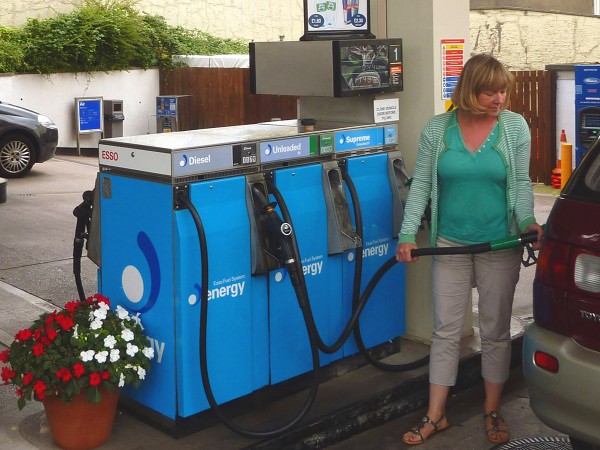 The price of petrol is of interest to most families, occupying a key component of weekly expenditure. Over the past decade, it has fluctuated significantly, from around 85p per litre to over £1.40. More recently, prices have been around £1.03 to £1.10, depending on the brand and the location. But, will we see prices falling below that magical £1 per litre mark?
The price of petrol is of interest to most families, occupying a key component of weekly expenditure. Over the past decade, it has fluctuated significantly, from around 85p per litre to over £1.40. More recently, prices have been around £1.03 to £1.10, depending on the brand and the location. But, will we see prices falling below that magical £1 per litre mark?
We have recently seen a 2p drop in wholesale fuel prices and it is this which has led to speculation about a further fall in prices at petrol stations to below £1. This, according to the RAC, has a ‘very good chance’ of happening.
A key determinant of petrol prices is the market price for crude oil and it is this which has been contributing towards the low petrol prices. As these prices filter through to the pumps, the RAC suggests that prices may once again come down. Furthermore, with some of the key petrol stations being operated by the big supermarkets, competition for sales and hence on prices may be fierce.
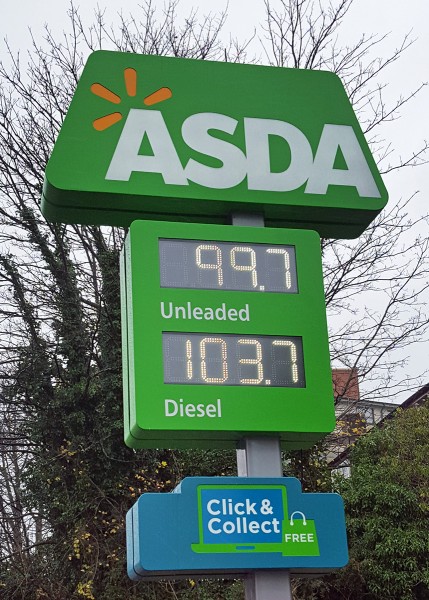 But, now let’s consider another well-informed organisation. According to the AA, the chances of petrol prices falling below £1 are ‘remote’. So, who should we believe? In fact, we can probably believe both. The market price may not fall below £1, but in the run-up to Christmas and in the start of the New Year, we may well see petrol on sale for under £1 as a means to entice shoppers or, as the AA has said, as a ‘marketing gimmick’. As you can see from the picture, Asda has dropped the price below £1 per litre in some of its petrol stations.
But, now let’s consider another well-informed organisation. According to the AA, the chances of petrol prices falling below £1 are ‘remote’. So, who should we believe? In fact, we can probably believe both. The market price may not fall below £1, but in the run-up to Christmas and in the start of the New Year, we may well see petrol on sale for under £1 as a means to entice shoppers or, as the AA has said, as a ‘marketing gimmick’. As you can see from the picture, Asda has dropped the price below £1 per litre in some of its petrol stations.
You might think this is a little strange, given the inelastic nature of the demand for petrol: after all, as prices of petrol rise and fall, I for one, don’t change my demand. This is also confirmed by HMRC, which reports that total petrol consumption is falling despite the low prices. But, it’s probably less about changing your total demand for petrol and more about from where you buy that total demand. For any one petrol station, the demand may be relatively elastic. It is this which may fuel a price war on petrol. The following articles consider this.
£1 per litre petrol? It’s unlikely The Telegraph, Rozina Sabur (20/11/15)
‘Good chance’ of £1 per litre petrol, says RAC BBC News (20/11/15)
Petrol prices ‘could fall below £1 per litre’ ITV News (20/11/15)
Fuel Prices: ‘Good chance’ of £1 a litre Sky News (20/11/15)
Questions
- What are they demand-side and supply-side factors which have helped to cut the price of petrol? Use a diagram to illustrate your answer.
- How much of a role has OPEC played in keeping petrol prices down in the UK?
- Why is the demand for petrol price inelastic?
- HMRC suggests that despite low prices, the demand for petrol has been falling. Does this suggest that the demand curve for petrol is upward sloping? Explain your answer.
- If the demand for petrol is falling, can this tell car companies anything about the future demand for vehicles? Which concepts are important here?
- If petrol prices do not fall to reflect falling oil prices, what does this suggest about the profit margins on petrol? Should government intervene?
 Global merger and acquisition deals with a combined value of £2.7 trillion ($4.06 trillion) have taken place so far this year (1 Jan to 3 Nov). This is a 38% increase on the same period in 2014 ($2.94 trillion) and even surpasses the previous record high for the same period in 2007 ($3.93 trillion) (see the chart from the Dealogic article linked below).
Global merger and acquisition deals with a combined value of £2.7 trillion ($4.06 trillion) have taken place so far this year (1 Jan to 3 Nov). This is a 38% increase on the same period in 2014 ($2.94 trillion) and even surpasses the previous record high for the same period in 2007 ($3.93 trillion) (see the chart from the Dealogic article linked below).
Measured by dollar value, October was the fifth biggest month in Mergers and Acquisitions (M&As) history with the announcement of $514bn of actual or proposed deals. These included:
|
|
| • |
the proposed £71 billion deal to acquire SABMiller (the world’s second largest brewer) by AB InBev (the world’s largest brewer); |
| • |
the $67bn takeover of network storage provider EMC by Dell (the world’s third largest computer supplier); |
| • |
the proposed deal to acquire Allergan (producer of Botox) by Pfizer (the producer of Viagra). |
Although the dollar value of M&As was extremely large in October the actual number of deals, 2177, was significantly lower than the average of 3521 over the previous 9 months.
Are these large M&As in the interests of the consumer? One advantage is that the newly combined firms may have lower average costs. Reports in the press, following the announcement of most M&As, often discuss the potential for reductions in duplicate resources and rationalisation. After the successful completion of a takeover two previously separate departments, such as finance, law or HRM, may be combined into one office. If the newly integrated department is (i) smaller than the previous two departments added together and (ii) can operate just as effectively, then average costs will fall. This is simply an example of an economy of scale.
Average costs will also decrease if x-inefficiency within the acquired business can be reduced or eliminated. X-inefficiency exists when an organisation incurs higher costs than are necessary to produce any given output. In other words it is not producing in the cheapest possible way. In a number of takeovers in the brewing industry, AB InBev has gained a fearsome reputation for minimising costs and removing any waste or slack in acquired organisations. In an interview with the Financial Times, its chief executive, Carlos Brito, stated that:
“In any company, there’s 20 per cent that lead, 70 per cent that follow and 10 per cent that do nothing. So the 10 per cent, of course, you need to get rid of.”
If any reduction in costs results in lower prices without any lessening in the quality of the good or service, then of course the customer will benefit. However, when two relatively large organisations combine, it may result in a newly merged business with considerable market power. With a fall in the price elasticity of demand for its goods and services, this bigger company may be able to increase its prices and make greater revenues.
An important responsibility of a taxpayer-funded competition authority is to make judgements about whether or not large M&As are in the public interest. For example, the Competition and Markets Authority in the UK investigates deals if the target company has a UK turnover that exceeds £70 million, or if the newly combined business has a market share that is equal to or exceeds 25 per cent. If the CMA concludes that an M&A would lead to a substantial lessening of competition in the market, then it could prohibit the deal from taking place. This has only happened on 9 occasions in the last 12 years. If competition concerns are identified, it is far more likely that CMA will allow the deal to go ahead but with certain conditions attached. This has happened 29 times in the last 12 years and the conditions are referred to as remedies.
The CMA has recently published a report (Understanding past merger remedies) that attempts to evaluate the relative success of the various remedies it has used in 13 M&A cases.
Articles
Are big mergers bad for consumers? BBC News, Daniel Thomas (30/10/15)
Mergers and acquisitions madness may be about to stop The Guardian (11/10/15)
M&A deal activity on pace for record year The Wall Street Journal, Dana Mattioli and Dan Strumpf (10/08/15) [Note: if you can’t see the full article, try clearing cookies (Ctrl+Shift+Delete)]
Global M&A Volume Surpasses $4tr in 2015 YTD Dealogic, Anthony Read (04/11/15)
M&A Volumes Weaken in October despite Megadeals Financial Times, James Fontanella-Khan and Arash Massoudi (01/11/15)
The merger of Dell and EMC is further proof that the IT industry is remaking itself The Economist (12/10/15)
Questions
- Using a cost curve diagram, explain the difference between economies of scale and x-efficiency.
- Explain why a takeover or merger might reduce the price elasticity of demand for the goods or services produced by the newly combined firm.
- Explain how the CMA determines the size of the appropriate market when calculating a firm’s market share.
- Draw a diagram to illustrate the simultaneous impact of greater market power and lower average costs that might result from a horizontal merger. Consider the impact on consumer, producer and total surplus.
- What is the difference between a structural and a behavioural remedy?
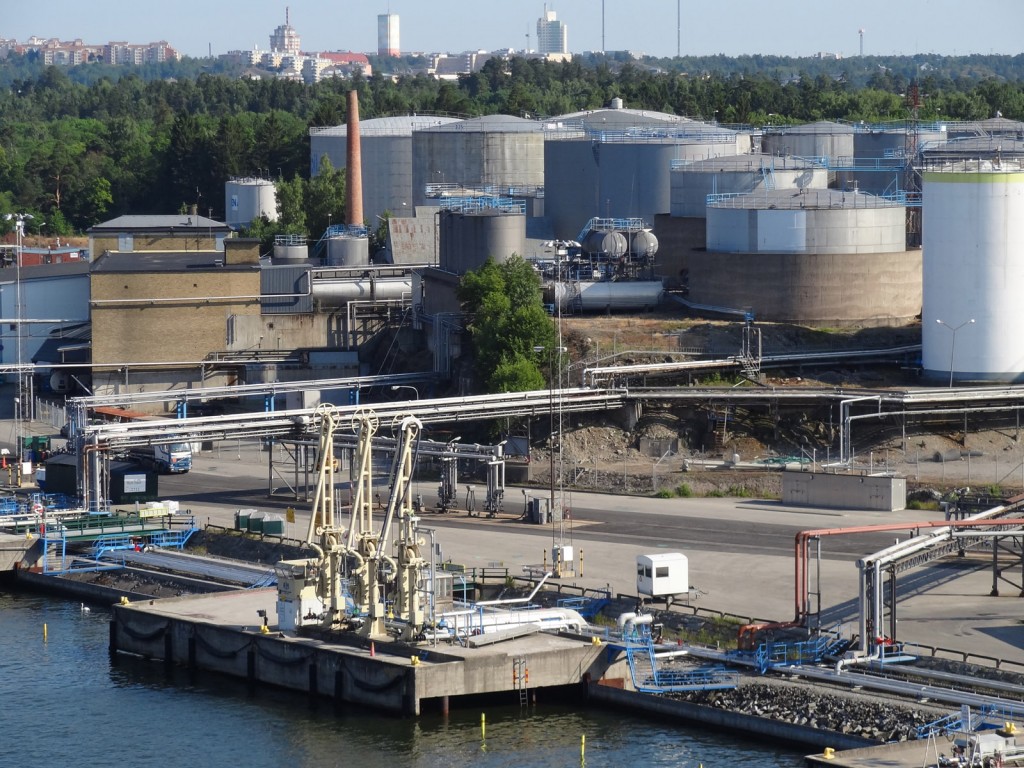 The demand for oil is growing and yet the price of oil, at around $46 per barrel over the past few weeks, remains at less than half that of the period from 2011 to mid 2014. The reason is that supply has been much larger than demand. The result has been a large production surplus and a growth in oil stocks. Supply did fall somewhat in October, which reduced the surplus in 2015 Q3 below than of the record level in Q2 – but the surplus was still the second highest on record.
The demand for oil is growing and yet the price of oil, at around $46 per barrel over the past few weeks, remains at less than half that of the period from 2011 to mid 2014. The reason is that supply has been much larger than demand. The result has been a large production surplus and a growth in oil stocks. Supply did fall somewhat in October, which reduced the surplus in 2015 Q3 below than of the record level in Q2 – but the surplus was still the second highest on record.
What is more, the modest growth in demand is forecast to slow in 2016. Supply, however, is expected to decrease through the first three quarters of 2016, before rising again at the end of 2016. The result will be a modest rise in price into 2016, to around $56 per barrel, compared with an average of just over $54 per barrel so far for 2015 (click here for a PowerPoint of the chart below).
 But why does supply remain so high, given such low prices? As we saw in the post The oil industry and low oil prices, it is partly the result of increases in supply from large-scale investment in new sources of oil over the past few years, such as the fracking of shale deposits, and partly the increased output by OPEC designed to keep prices low and make new investment in shale oil unprofitable.
But why does supply remain so high, given such low prices? As we saw in the post The oil industry and low oil prices, it is partly the result of increases in supply from large-scale investment in new sources of oil over the past few years, such as the fracking of shale deposits, and partly the increased output by OPEC designed to keep prices low and make new investment in shale oil unprofitable.
So why then doesn’t supply drop off rapidly? As we saw in the post, A crude indicator of the economy (Part 2), even though shale oil producers in the USA need a price of around $70 or more to make investment in new sources profitable, the marginal cost of extracting oil from existing sources is only around $10 to £20 per barrel. 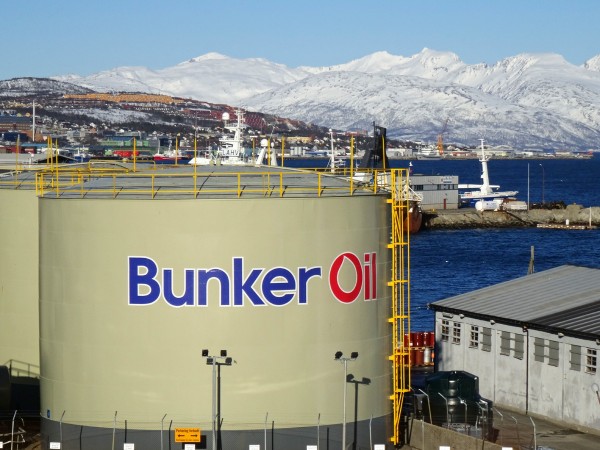 This means that shale oil production will continue until the end of the life of the wells. Given that wells typically have a life of at least three years, it could take some time for the low prices to have a significant effect on supply. According to the US Energy Information Administration’s forecasts, US crude oil production will drop next year by only just over 5%, from an average of 9.3 million barrels per day in 2015 to 8.8 million barrels per day in 2016.
This means that shale oil production will continue until the end of the life of the wells. Given that wells typically have a life of at least three years, it could take some time for the low prices to have a significant effect on supply. According to the US Energy Information Administration’s forecasts, US crude oil production will drop next year by only just over 5%, from an average of 9.3 million barrels per day in 2015 to 8.8 million barrels per day in 2016.
In the meantime, we can expect low oil prices to continue for some time. Whilst this is bad news for oil exporters, it is good news for oil importing countries, as the lower costs will help aid recovery.
Webcasts
 IEA says oil glut could worsen through 2016 Euronews (13/11/15)
IEA says oil glut could worsen through 2016 Euronews (13/11/15)
 IEA Says Record 3 Billion-Barrel Oil Stocks May Deepen Rout BloombergBusiness, Grant Smith (13/11/15)
IEA Says Record 3 Billion-Barrel Oil Stocks May Deepen Rout BloombergBusiness, Grant Smith (13/11/15)
Articles
IEA Offers No Hope For An Oil-Price Recovery Forbes, Art Berman (13/11/15)
Oil glut to swamp demand until 2020 Financial Times, Anjli Raval (10/11/15)
Record oil glut stands at 3bn barrels BBC News (13/11/15)
Global oil glut highest in a decade as inventories soar The Telegraph, Mehreen Khan (12/11/15)
The Oil Glut Was Created In Q1 2015; Q3 OECD Inventory Movements Are Actually Quite Normal Seeking Alpha (13/11/15)
Record oil glut stands at 3 billion barrels Arab News (14/11/15)
OPEC Update 2015: No End To Oil Glut, Low Prices, As Members Prepare For Tense Meeting International Business Times, Jess McHugh (12/11/15)
Surviving The Oil Glut Investing.com, Phil Flynn (11/11/15)
Reports and data
Oil Market Report International Energy Agency (IEA) (13/11/15)
Short-term Energy Outlook US Energy Information Administration (EIA) (10/11/15)
Brent Crude Prices US Energy Information Administration (EIA)
Questions
- Using demand and supply diagrams, demonstrate (a) what has been happening to oil prices in 2015 and (b) what is likely to happen to them in 2016.
- How are the price elasticities of demand and supply relevant in explaining the magnitude of oil price movements?
- What are oil prices likely to be in five years’ time?
- Using aggregate demand and supply analysis, demonstrate the effect of lower oil prices on a national economy.
- Why might the downward effect on inflation from lower oil prices act as a stimulus to the economy? Is this consistent with deflation being seen as requiring a stimulus from central banks, such as lower interest rates or quantitative easing?
- Do you agree with the statement that “Saudi Arabia is acting directly against the interests of half the cartel and is running OPEC over a cliff”?
- If the oil price is around $70 per barrel in a couple of years’ time, would it be worth oil companies investing in shale oil wells at that point? Explain why or why not.
- Distinguish between short-run and long-run shut down points. Why is the short-run shut down price likely to be lower than the long-run one?
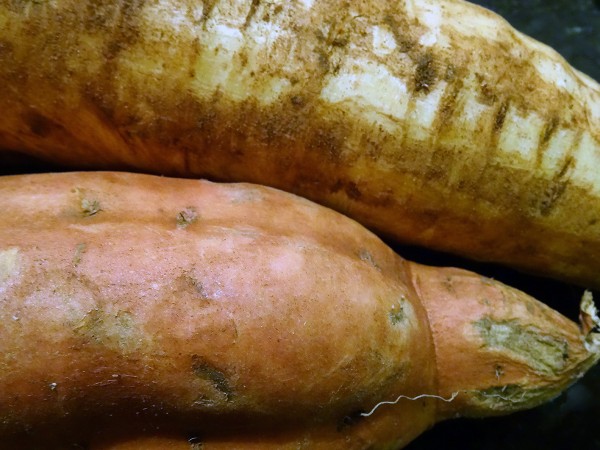 This rather strange question has been central to a storm that has been brewing between various celebrity chefs, including Jamie Oliver and Hugh Fearnley-Whittingstall, and the supermarkets. Supermarkets say that consumers don’t want irregular shaped vegetables, such as carrots, parsnips and potatoes. ‘Nonsense’, say their critics.
This rather strange question has been central to a storm that has been brewing between various celebrity chefs, including Jamie Oliver and Hugh Fearnley-Whittingstall, and the supermarkets. Supermarkets say that consumers don’t want irregular shaped vegetables, such as carrots, parsnips and potatoes. ‘Nonsense’, say their critics.
At the centre of the storm are the farmers, who find a large proportion of their vegetables are rejected by the supermarkets. And these are vegetables which are not damaged or bad – simply not of the required shape. Although these rejected vegetables have been described as ‘wonky’, in fact many are not wonky at all, but simply a little too large or too small, or too short or too long. Most of these vegetables are simply wasted – ploughed back into the ground, or at best used for animal feed.
And it’s not just shape; it’s colour too. Many producers of apples find a large proportion being rejected because they are too red or not red enough.
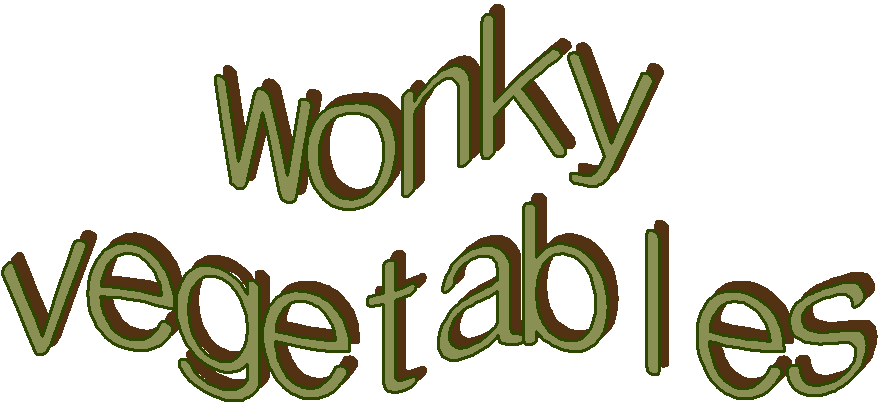 But do consumers really want standardised fruit vegetables? Are the supermarkets correct? Are they responding to demand? Or are they attempting to manipulate demand?
But do consumers really want standardised fruit vegetables? Are the supermarkets correct? Are they responding to demand? Or are they attempting to manipulate demand?
Supermarkets claim that they are just responding to what consumers want. Their critics say that they are setting ludicrously rigid cosmetic standards which are of little concern to consumers. As Hugh Fearnley-Whittingstall states:
‘It’s only when you see the process of selection on the farm, how it has been honed and intensified, it just looks mad. There are many factory line systems where you have people looking for faults on the production line; in this system you’re looking for the good ones.
What we’re asking supermarkets to do is to relax their cosmetic standards for the vegetables that all get bagged up and sold together. It’s about slipping a few more of the not-so-perfect ones into the bag.’
In return, consumers must be prepared to let the supermarkets know that they are against these cosmetic standards and are perfectly happy to buy slightly more irregular fruit and vegetables. Indeed, this is beginning to happen through social media.  The pressure group 38 degrees has already taken up the cause.
The pressure group 38 degrees has already taken up the cause.
But perhaps consumers ‘voting with their feet’ is what will change supermarkets’ behaviour. With the rise of small independent greengrocers, many from Eastern Europe, there is now intense competition in the fruit and vegetables market in many towns and cities. Perhaps supermarkets will be forced to sell slightly less cosmetically ‘perfect’ produce at a lower price to meet this competition.
Videos
 Hugh’s War on Waste Episode 1 BBC on YouTube, Hugh Fearnley-Whittingstall (2/11/15)
Hugh’s War on Waste Episode 1 BBC on YouTube, Hugh Fearnley-Whittingstall (2/11/15)
 Hugh’s War on Waste Episode 2 BBC on YouTube, Hugh Fearnley-Whittingstall (9/11/15)
Hugh’s War on Waste Episode 2 BBC on YouTube, Hugh Fearnley-Whittingstall (9/11/15)
Articles
Hugh Fearnley-Whittingstall rejects Morrisons’ ‘pathetic’ wonky veg trial The Guardian, Adam Vaughan (9/11/15)
Jamie Oliver leads drive to buy misshapen fruit and vegetables The Guardian, Rebecca Smithers (1/1/15)
Hugh Fearnley-Whittingstall’s war over wonky parsnips The Telegraph, Patrick Foster (30/10/15)
Asda extends ‘wonky’ fruit and veg range Resource, Edward Perchard (4/11/15)
Wearne’s last farmer shares memories and laments loss of farming community in Langport area Western Gazette, WGD Mumby (8/11/15)
Viewpoint: The rejected vegetables that aren’t even wonky BBC News Magazine (28/10/15)
Viewpoint: The supermarkets’ guilty secret about unsold food BBC News Magazine (6/11/15)
Questions
- What market failures are there is the market for fresh fruit and vegetables?
- Supermarkets are oligopsonists in the wholesale market for fruit and vegetables. What is the implication of this for (a) farmers; (b) consumers?
- Is there anything that (a) consumers and (b) the government can do to stop the waste of fruit and vegetables grown for supermarkets?
- How might supermarkets estimate the demand for fresh fruit and vegetables and its price elasticity?
- What can supermarkets do with unsold food? What incentives are there for supermarkets not to throw it away but to make good use of it?
- Could appropriate marketing persuade people to be less concerned about the appearance of fruit and vegetables? What form might this marketing take?
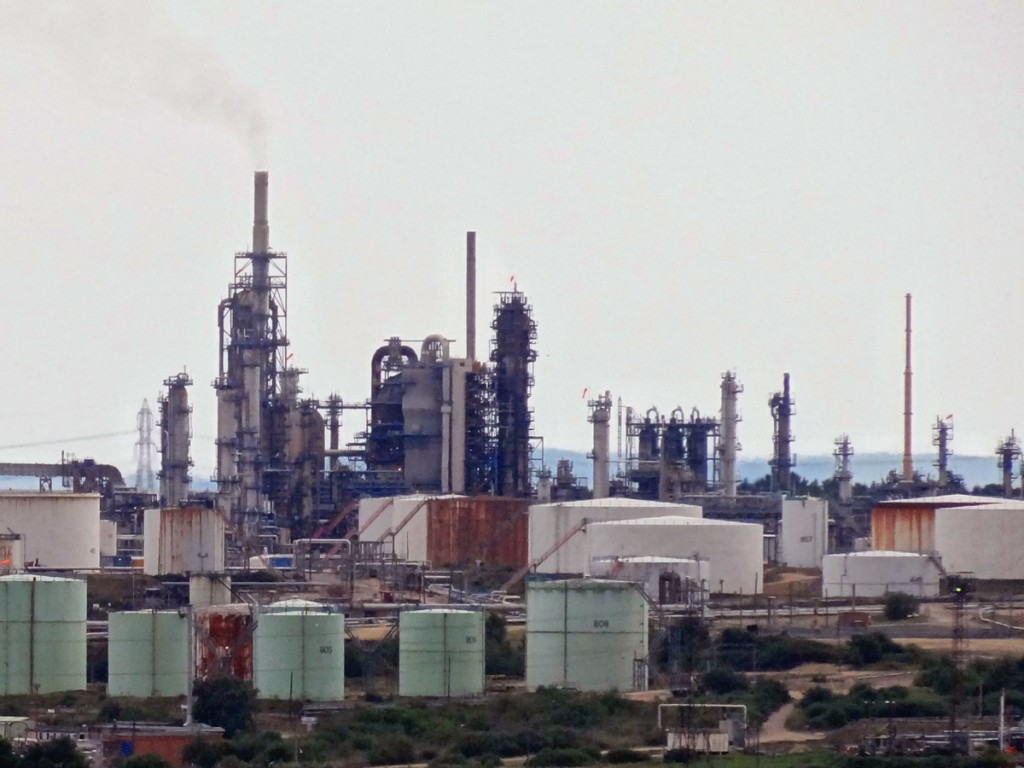 Oil prices will remain below $60 per barrel for the foreseeable future. At least this is what is being assumed by most oil producing companies. In the more distant future, prices may rise as investment in fracking, tar sands and new wells dries up. In meantime, however, marginal costs are sufficiently low as to make it economically viable to continue extracting oil from most sources at current prices.
Oil prices will remain below $60 per barrel for the foreseeable future. At least this is what is being assumed by most oil producing companies. In the more distant future, prices may rise as investment in fracking, tar sands and new wells dries up. In meantime, however, marginal costs are sufficiently low as to make it economically viable to continue extracting oil from most sources at current prices.
The low prices are partly the result of increases in supply from large-scale investment in new sources of oil over the past few years and increased output by OPEC. They are also partly the result of falling demand from China.
 But are low prices all bad news for the oil industry? It depends on the sector of the industry. Extraction and exploration may be having a hard time; but downstream, the refining, petrochemicals, distribution and retail sectors are benefiting from the lower costs of crude oil. For the big integrated oil companies, such as BP, the overall effect may not be as detrimental as the profits from oil production suggest.
But are low prices all bad news for the oil industry? It depends on the sector of the industry. Extraction and exploration may be having a hard time; but downstream, the refining, petrochemicals, distribution and retail sectors are benefiting from the lower costs of crude oil. For the big integrated oil companies, such as BP, the overall effect may not be as detrimental as the profits from oil production suggest.
Articles
BP – low oil price isn’t all bad new BBC News, Kamal Ahmed (27/10/15)
Want to See Who’s Happy About Low Oil Prices? Look at Refiners Bloomberg, Dan Murtaugh (31/10/15)
Low prices are crushing Canada’s oil sands industry. Shell’s the latest casualty. Vox, Brad Plumer (28/10/15)
Data
Brent spot crude oil prices US Energy Information Administration
BP Quarterly results and webcast BP
Questions
- Why have oil prices fallen?
- What is likely to happen to the supply of oil (a) over the next three years; (b) in the longer term?
- Draw a diagram with average and marginal costs and revenue to show why it may be profitable to continue producing oil in the short run at $50 per barrel. Why may it not be profitable to invest in new sources of supply if the price remains at current levels?
- Find out in what downstream sectors BP is involved and what has happened to its profits in these sectors.
- Draw a diagram with average and marginal costs and revenue to show why profits may be increasing from the wholesaling of petrol and diesel to filling stations.
- How is price elasticity of demand relevant to the profitablity of downstream sectors in the context of falling costs?
 The price of petrol is of interest to most families, occupying a key component of weekly expenditure. Over the past decade, it has fluctuated significantly, from around 85p per litre to over £1.40. More recently, prices have been around £1.03 to £1.10, depending on the brand and the location. But, will we see prices falling below that magical £1 per litre mark?
The price of petrol is of interest to most families, occupying a key component of weekly expenditure. Over the past decade, it has fluctuated significantly, from around 85p per litre to over £1.40. More recently, prices have been around £1.03 to £1.10, depending on the brand and the location. But, will we see prices falling below that magical £1 per litre mark? But, now let’s consider another well-informed organisation. According to the AA, the chances of petrol prices falling below £1 are ‘remote’. So, who should we believe? In fact, we can probably believe both. The market price may not fall below £1, but in the run-up to Christmas and in the start of the New Year, we may well see petrol on sale for under £1 as a means to entice shoppers or, as the AA has said, as a ‘marketing gimmick’. As you can see from the picture, Asda has dropped the price below £1 per litre in some of its petrol stations.
But, now let’s consider another well-informed organisation. According to the AA, the chances of petrol prices falling below £1 are ‘remote’. So, who should we believe? In fact, we can probably believe both. The market price may not fall below £1, but in the run-up to Christmas and in the start of the New Year, we may well see petrol on sale for under £1 as a means to entice shoppers or, as the AA has said, as a ‘marketing gimmick’. As you can see from the picture, Asda has dropped the price below £1 per litre in some of its petrol stations.








